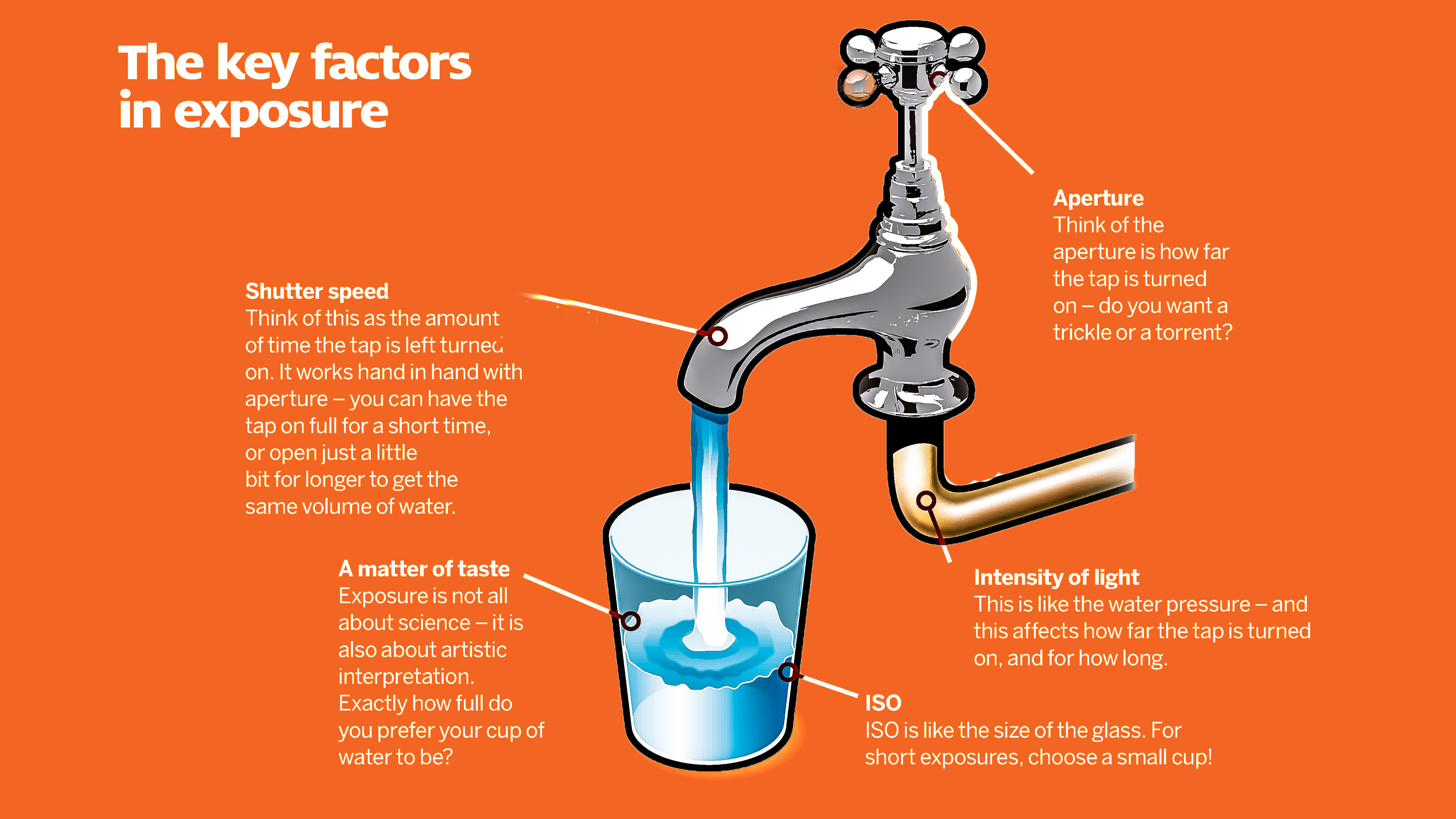What is exposure in photography?
It's key to every photo you take… so exactly what IS exposure in photography?
Watch video: What is exposure in photography?
Regardless of what photographs you take, or what kind of camera you take them with, the building blocks of every photo are placed on the foundation of one crucial thing: exposure. So what is exposure in photography?
Exposure describes the amount of light that reaches the image sensor or strip of film inside your camera – and, in turn, this will affect how light or how dark your photograph will be.
You can control your exposure by manipulating three variables: ISO (the light "sensitivity" of your sensor or film), aperture (which describes how wide the aperture blades in your lens open, and thus how much light they let through) and shutter speed (how long those shutter blades stay open). This is commonly known as the exposure triangle.
The exposure triangle has confounded photographers for decades, but I personally find it easier to think of it as an exposure seesaw.
Strictly speaking, ISO actually controls the brightness of an image – so I think of ISO as a 'master brightness dial'. However, the more you turn up that dial, the brighter you make your image, the more the image degrades – so you want to keep the ISO as low as possible.
Technically the “luminous exposure” of a photograph is specifically dictated by the aperture and shutter – so balancing the 'seesaw' between these variables is the key to mastering exposure.
These values control the amount of light entering your camera in two distinct ways. The aperture controls the quantity of light that enters; when your aperture is wide open, lots of light can enter at once, producing a lighter image. When your aperture is narrow, only a small amount of light can come in, thus producing a darker image.
What is exposure in photography?

Shutter speed controls how long the camera’s shutter stays open. The longer it’s open, the more light can enter and the lighter a picture will be – but if it’s only open for a short time, less light can enter and the picture will be darker.
These abstract concepts can be difficult to get your head around, so this video gives a more tangible explanation. First, imagine that the cup is our photograph, and filling it up with water is like filling it up with light to expose the image.
If we pour in the water very slowly, it’s going to take a long time to fill up – which would be like using a slow shutter speed. But if we throw the water in there super fast, we have to throw it all in at once – and this would be like using a fast shutter speed.
Now imagine that the kettle is the photograph. If we fill it up through the small spout opening, we're going to have to pour water in for longer – so this would be like a narrow aperture. But if we open the lid and fill it through the larger opening, we can pour water in much quicker – so this would be like a wide aperture.
Taking the analogy further, you can overexpose an image by overfilling your cup, and you can underexpose it by not filling it up enough. So what is the “correct” exposure? Well, some people like their cup filled all the way to the top, others like it filled three-quarters. So it’s entirely up to you – your cup is your photo, so you decide how much light to fill it with!

If you were asking what is exposure in photography, you might also be wondering what is ISO in photography? Using the best light meters will help you take control of your exposure, and these photography tips will enable you to master it!
Get the Digital Camera World Newsletter
The best camera deals, reviews, product advice, and unmissable photography news, direct to your inbox!

James has 22 years experience as a journalist, serving as editor of Digital Camera World for 6 of them. He started working in the photography industry in 2014, product testing and shooting ad campaigns for Olympus, as well as clients like Aston Martin Racing, Elinchrom and L'Oréal. An Olympus / OM System, Canon and Hasselblad shooter, he has a wealth of knowledge on cameras of all makes – and he loves instant cameras, too.
You must confirm your public display name before commenting
Please logout and then login again, you will then be prompted to enter your display name.
